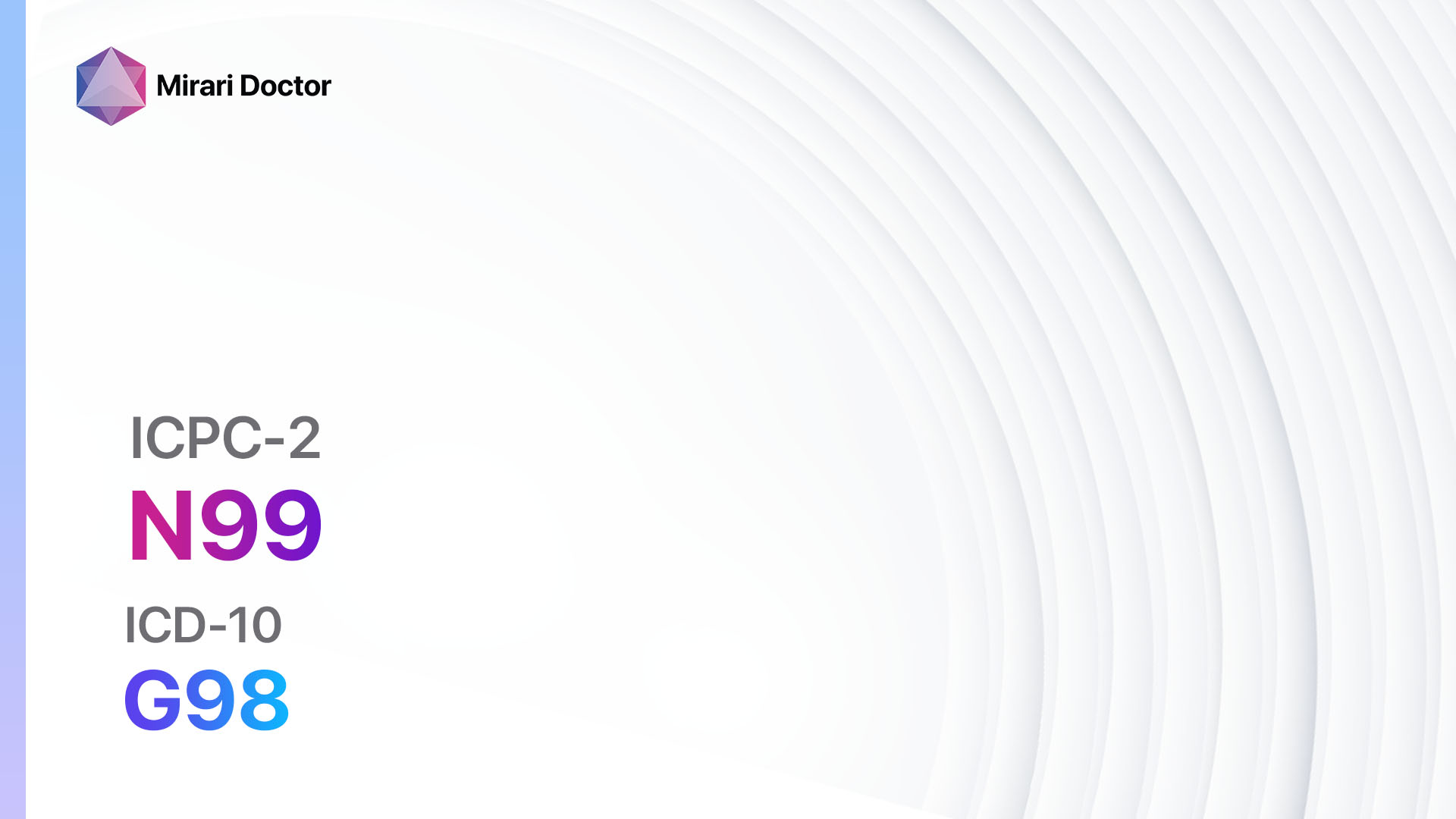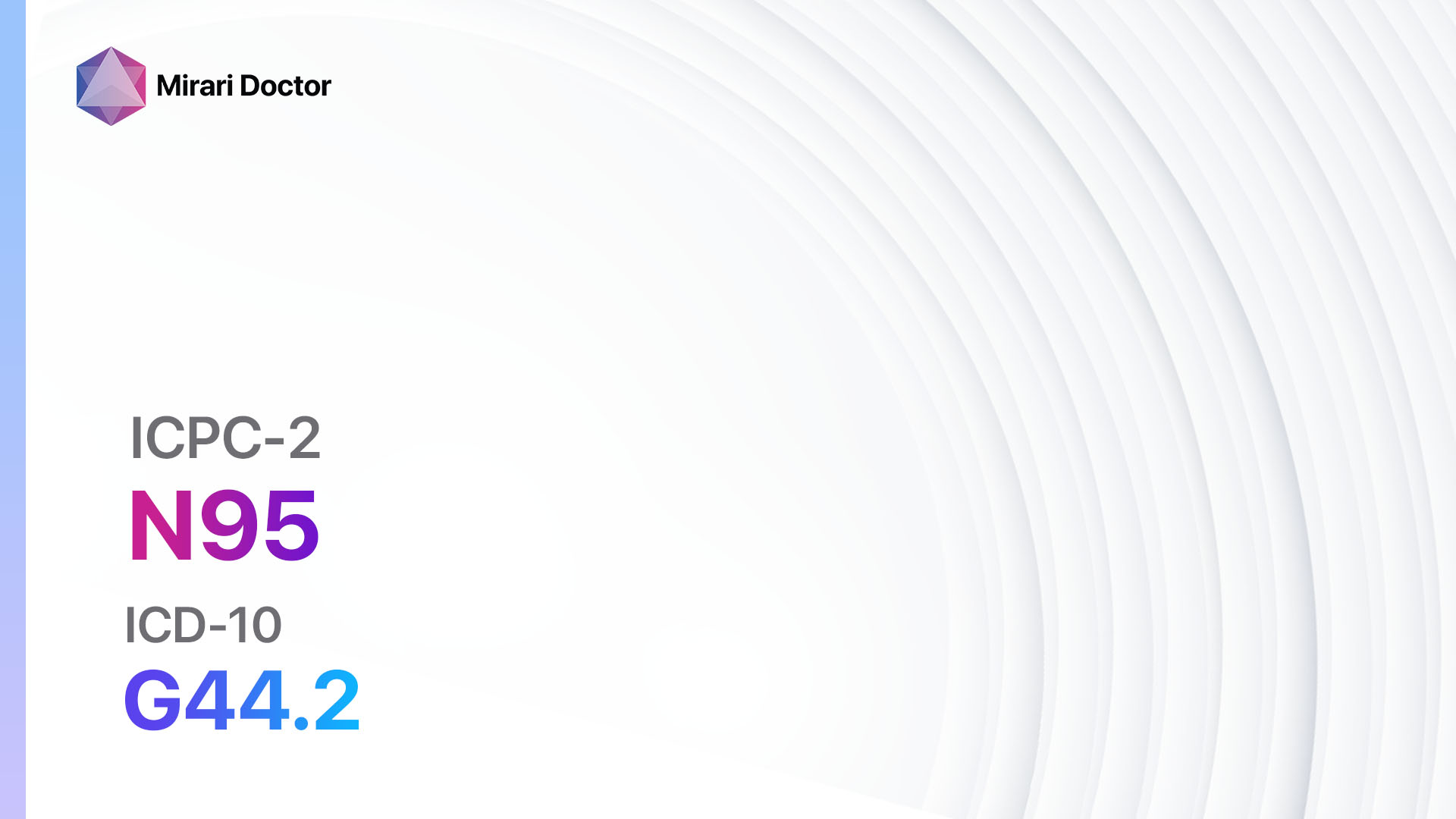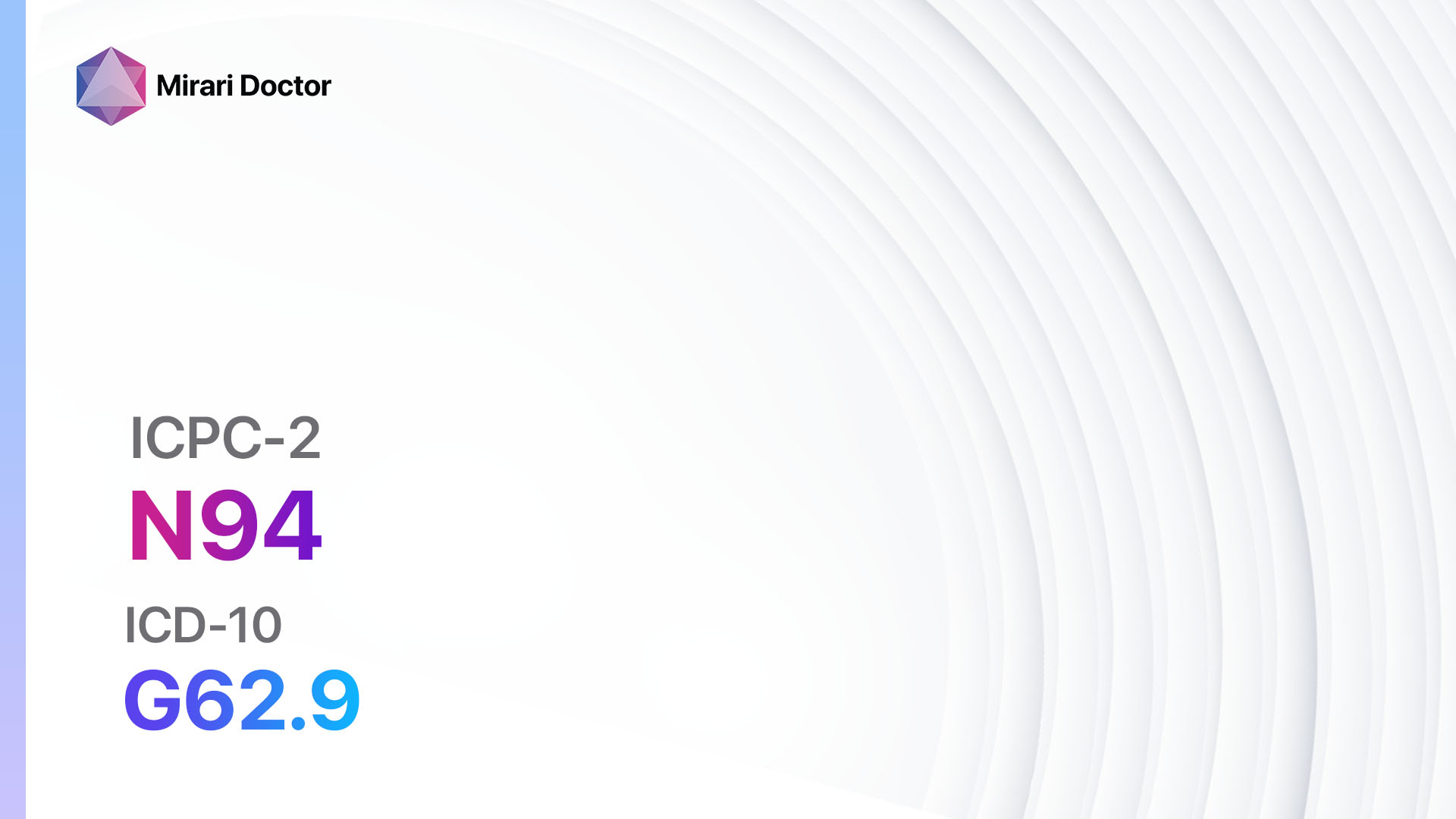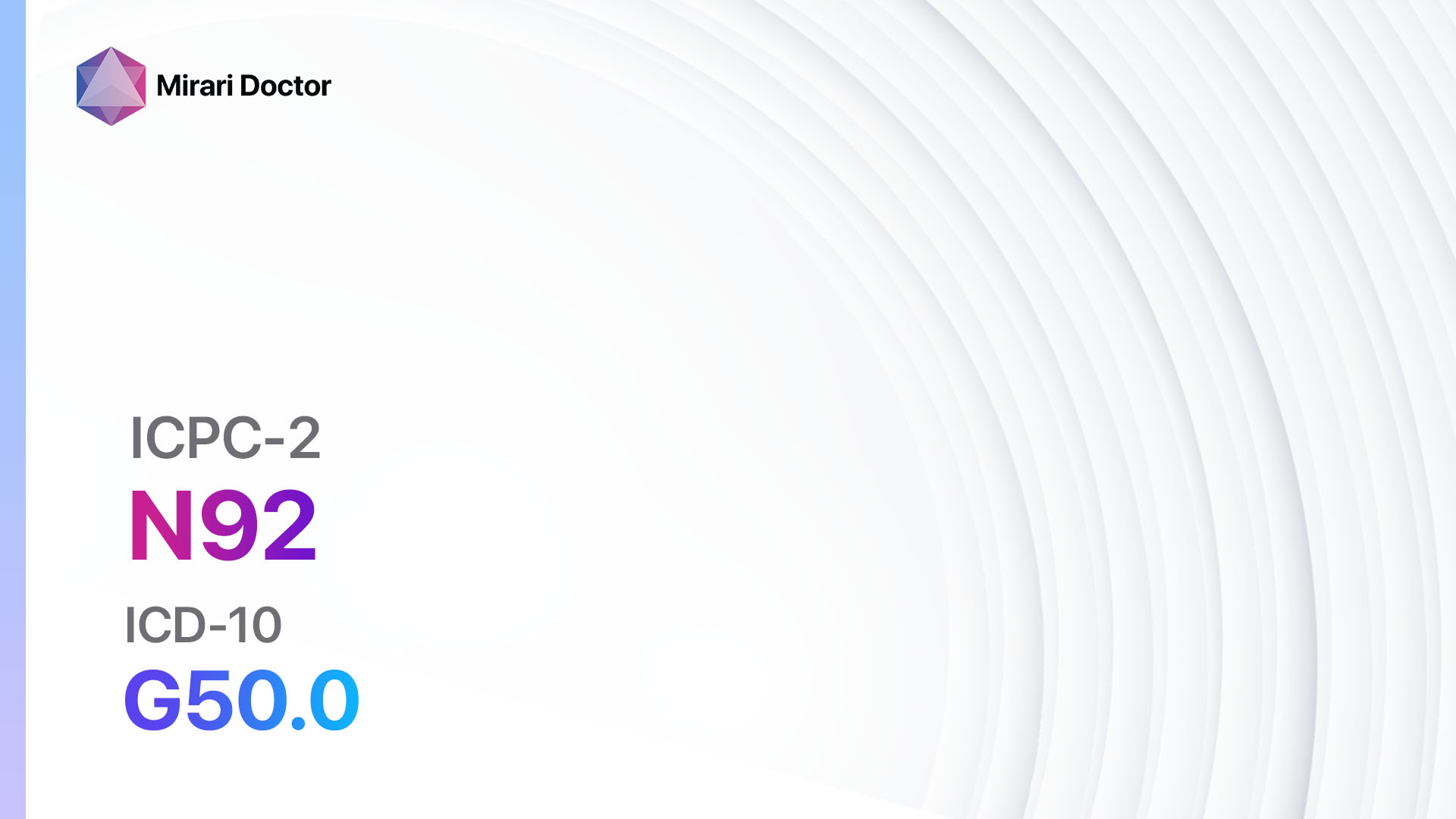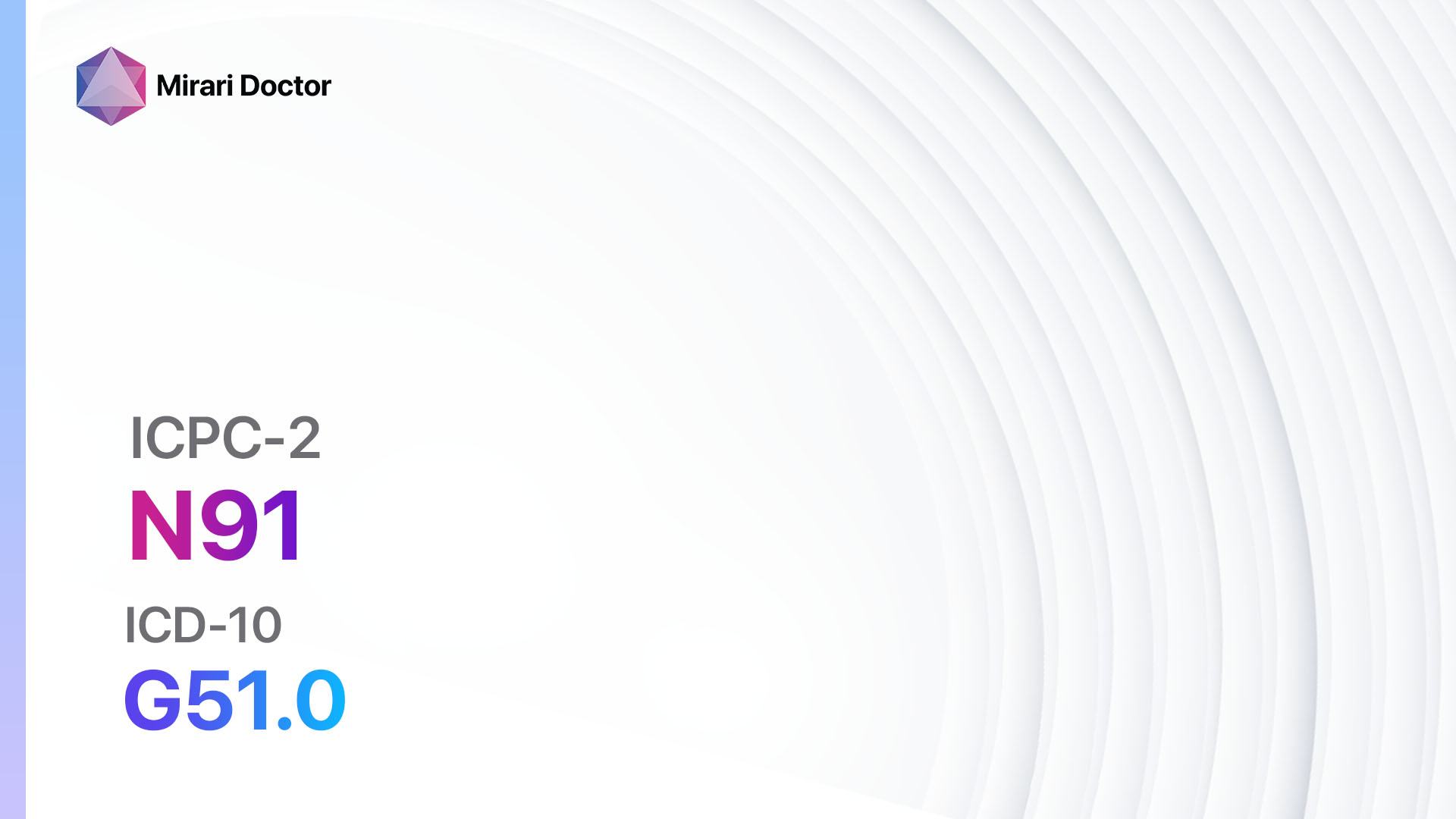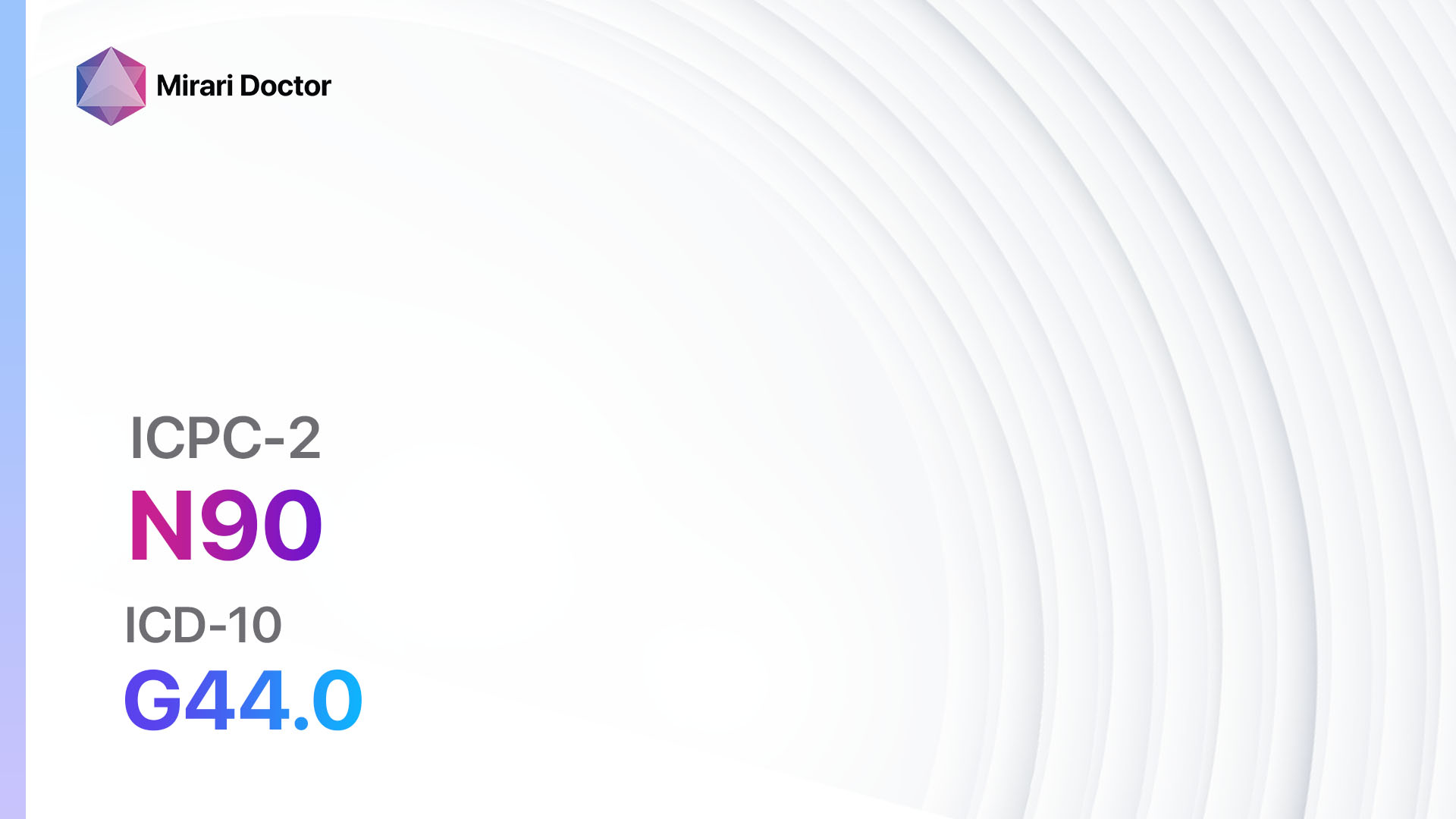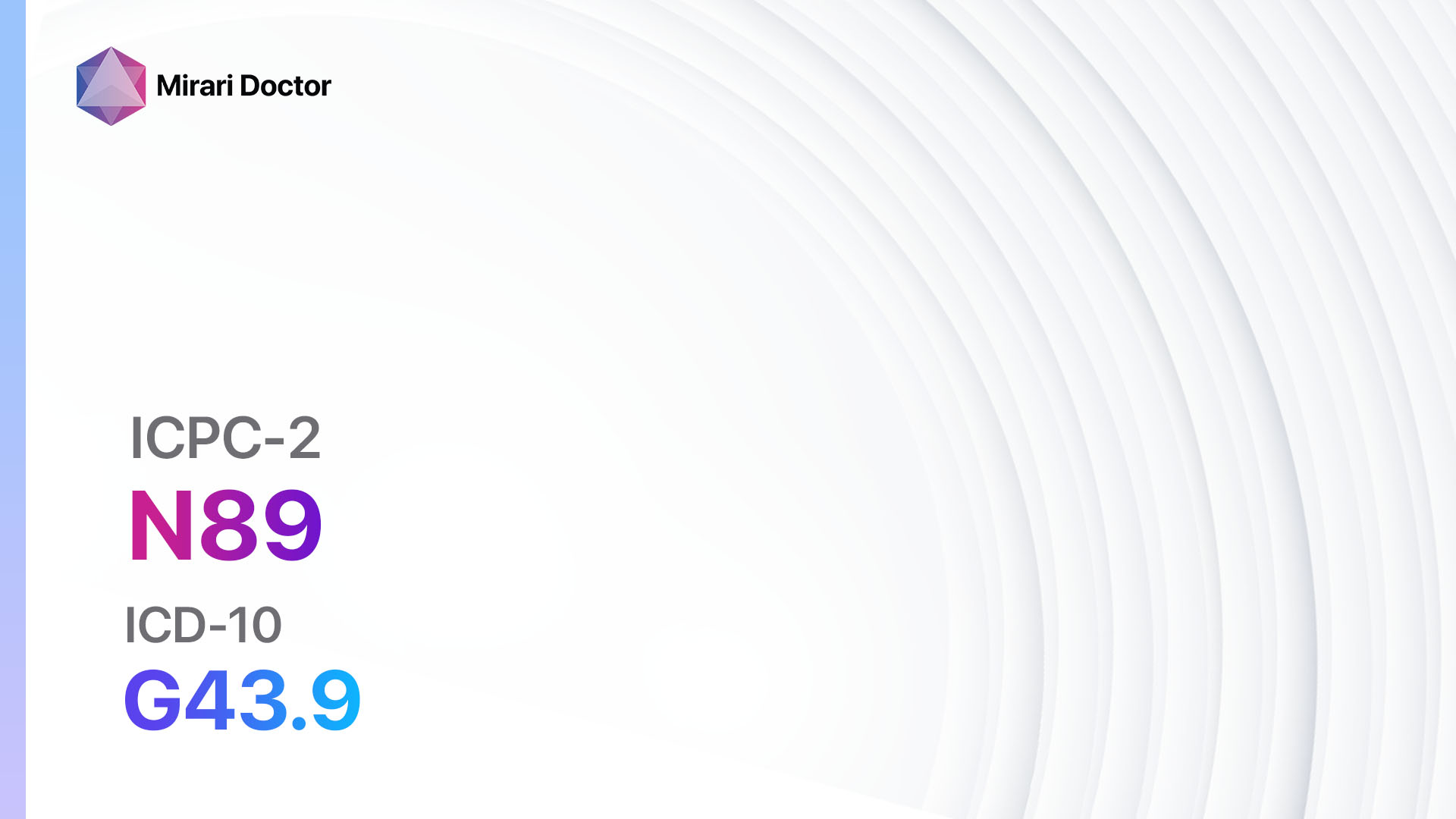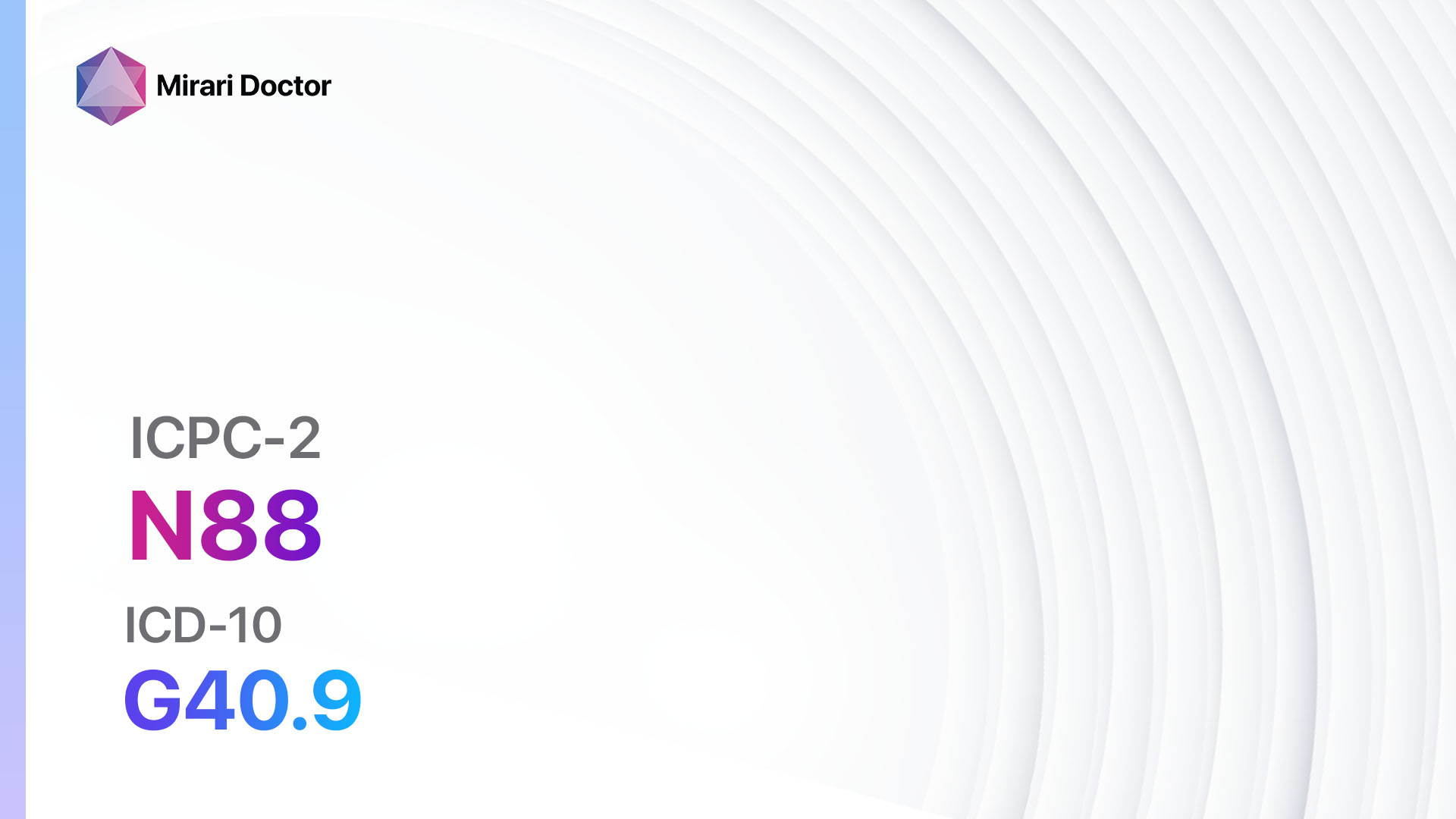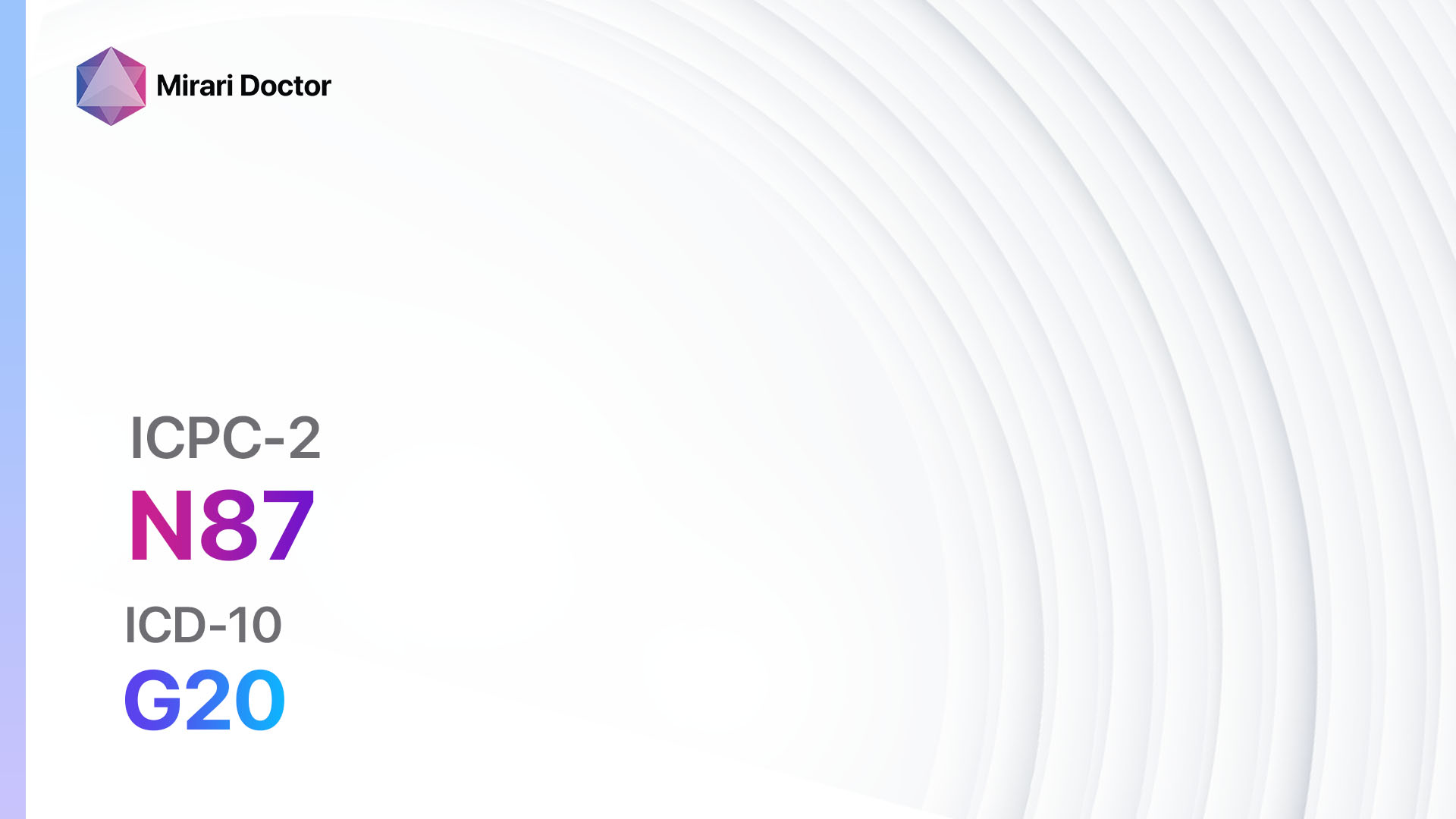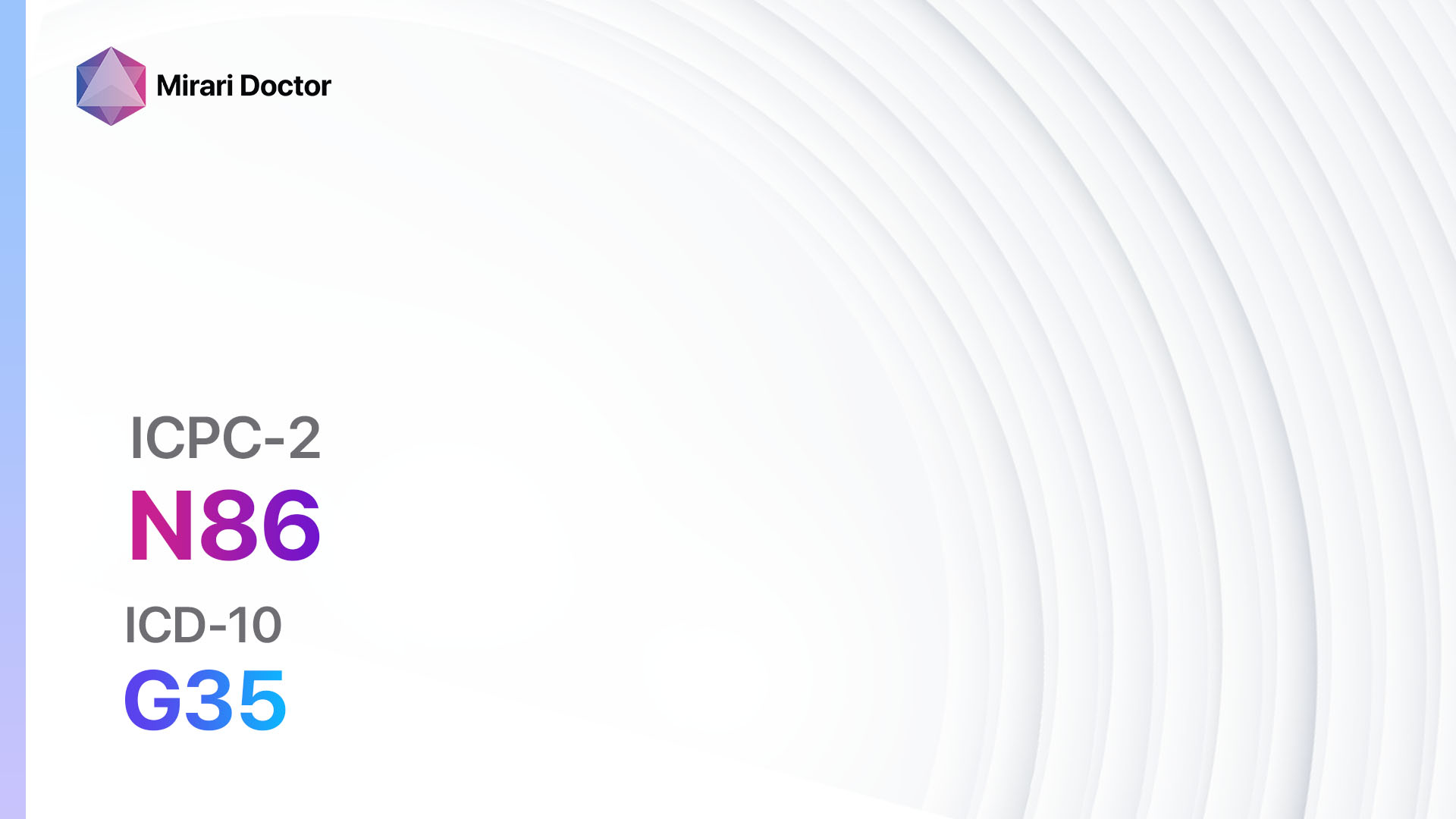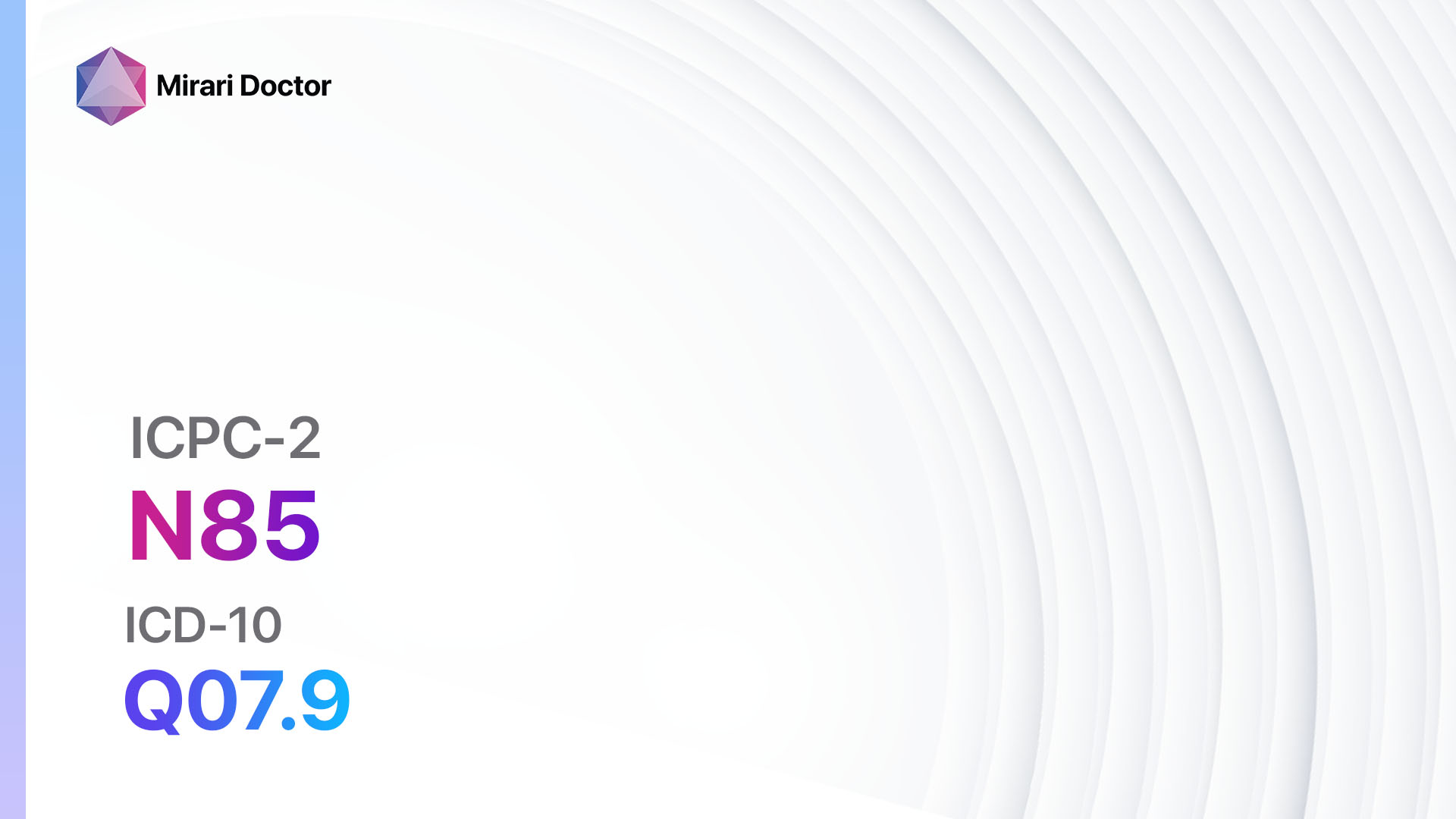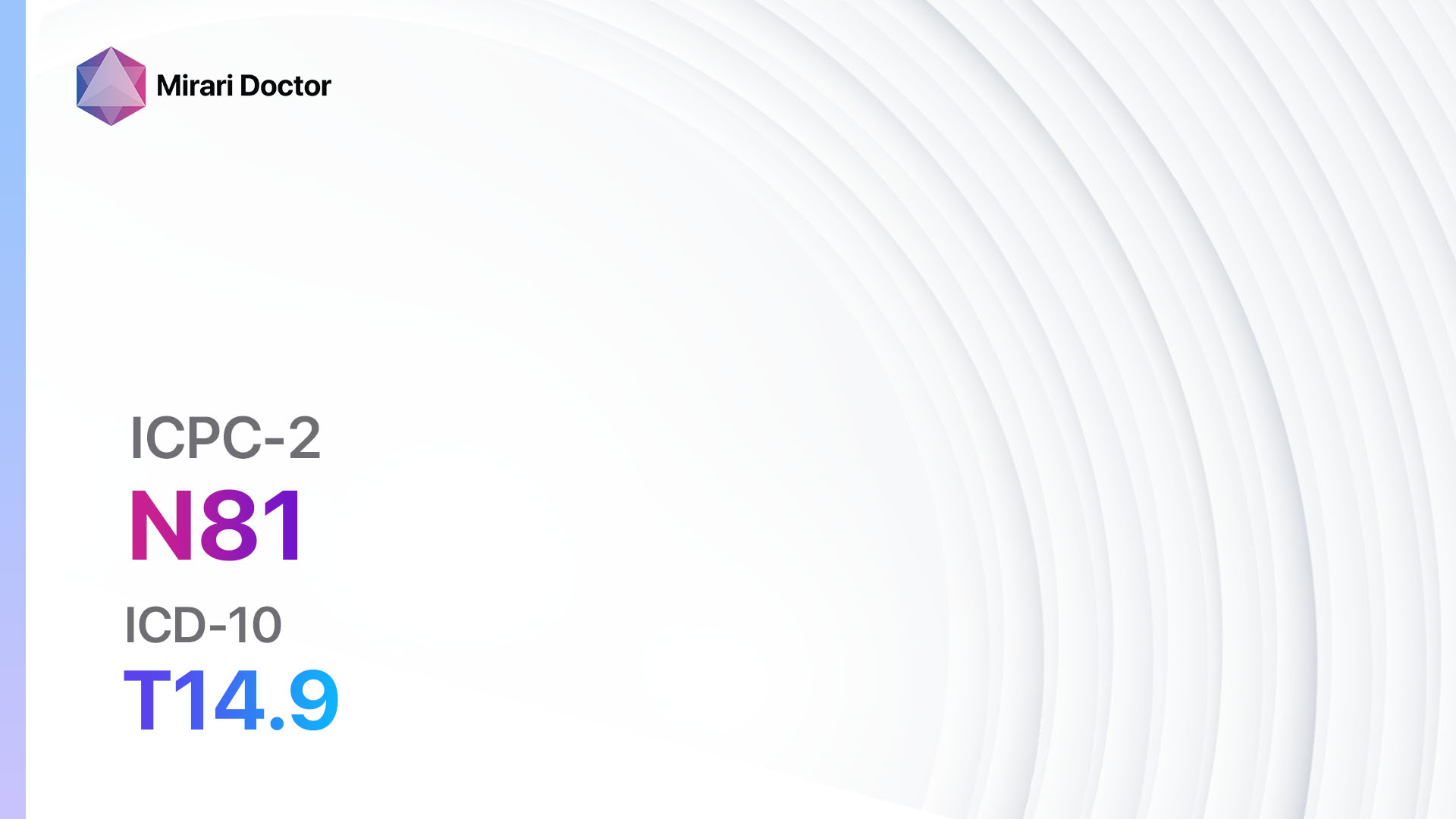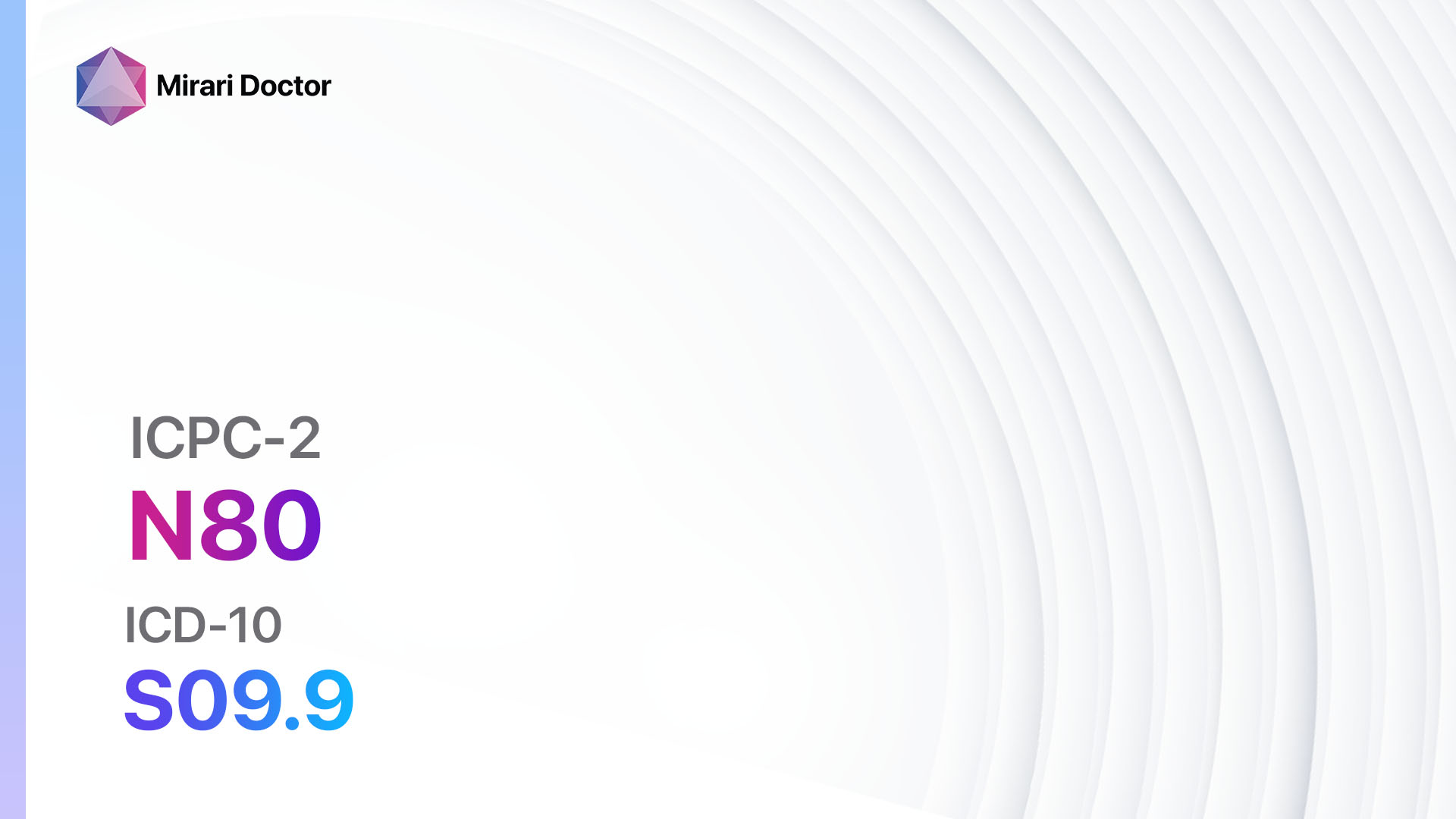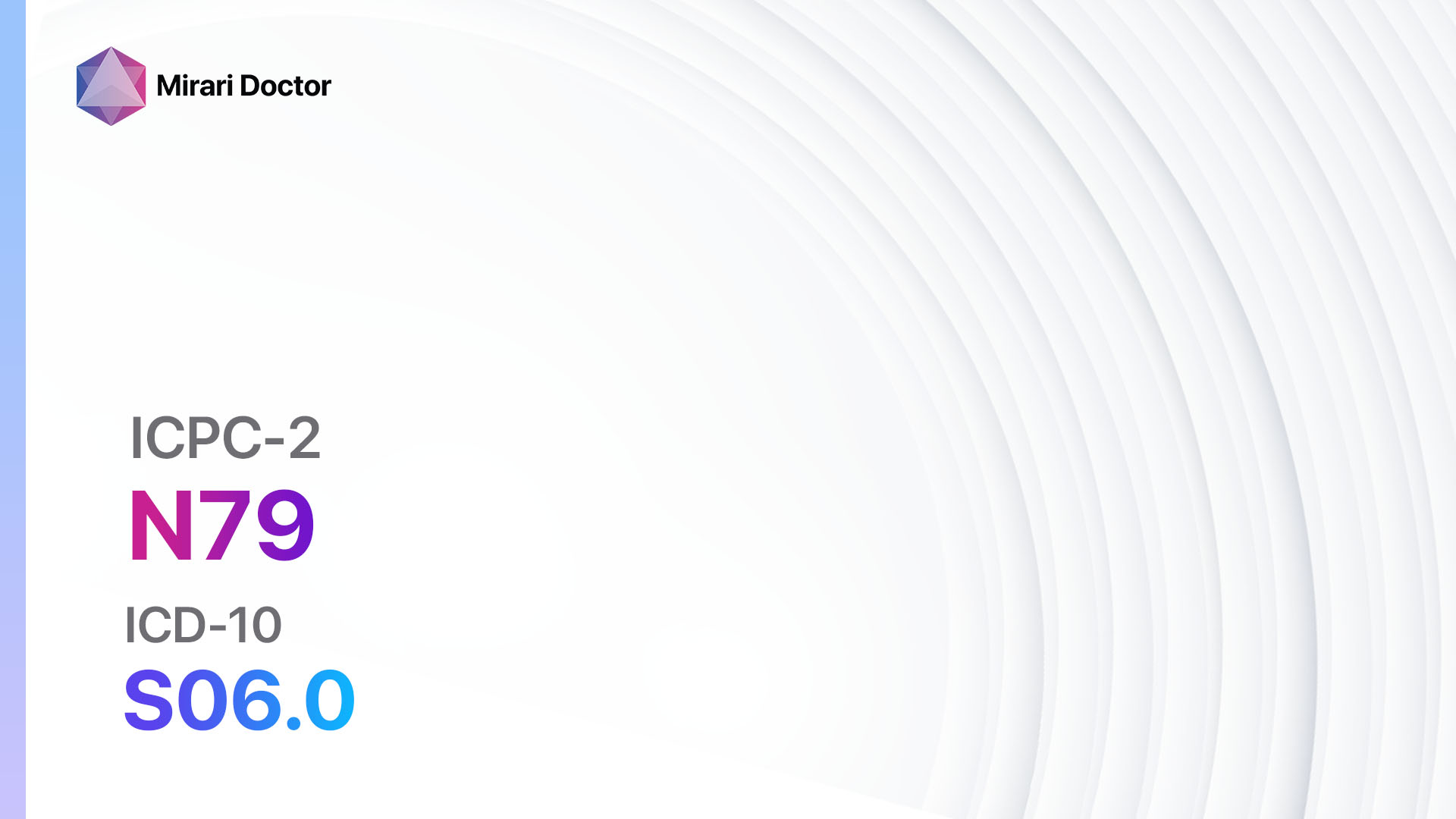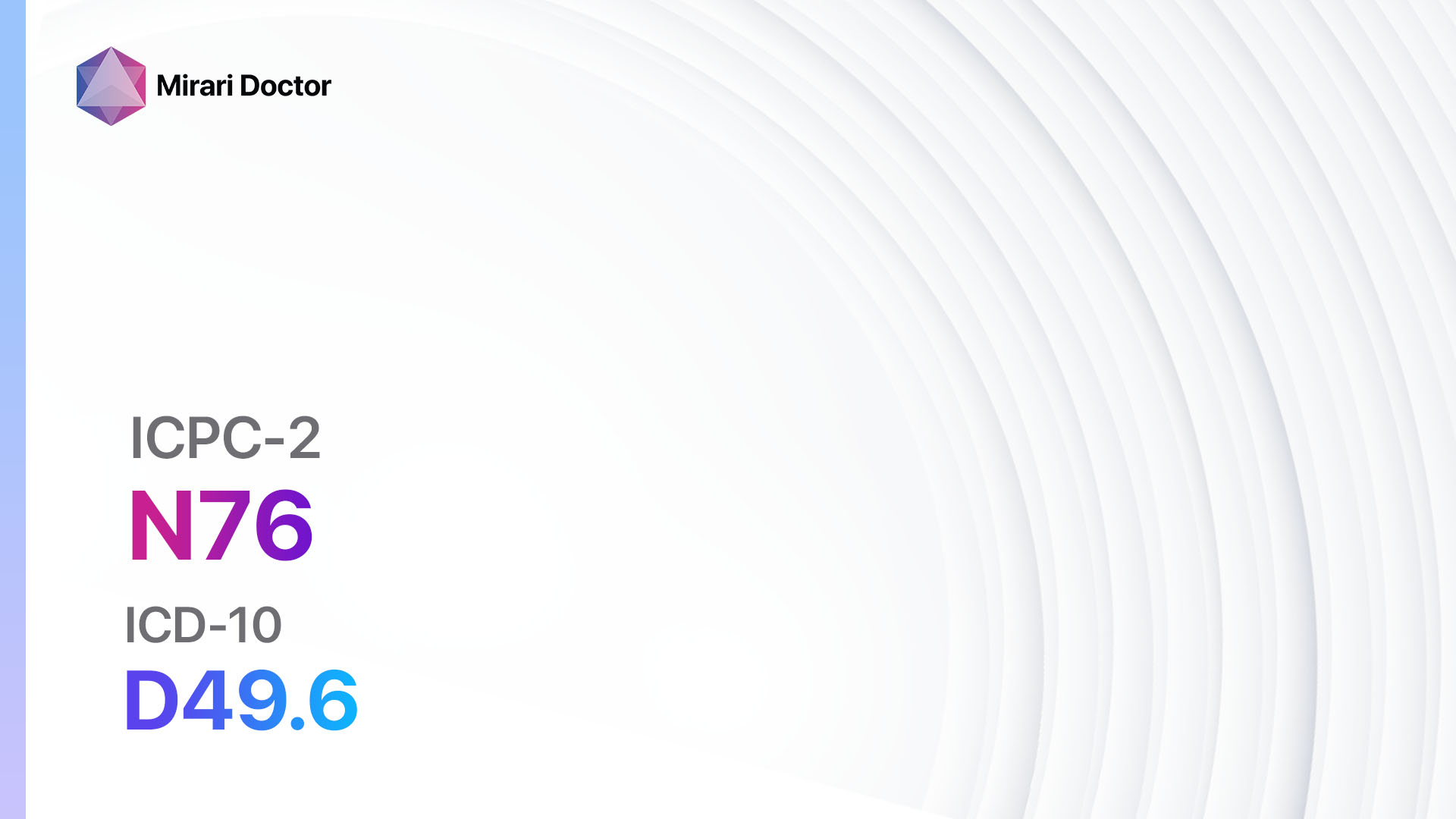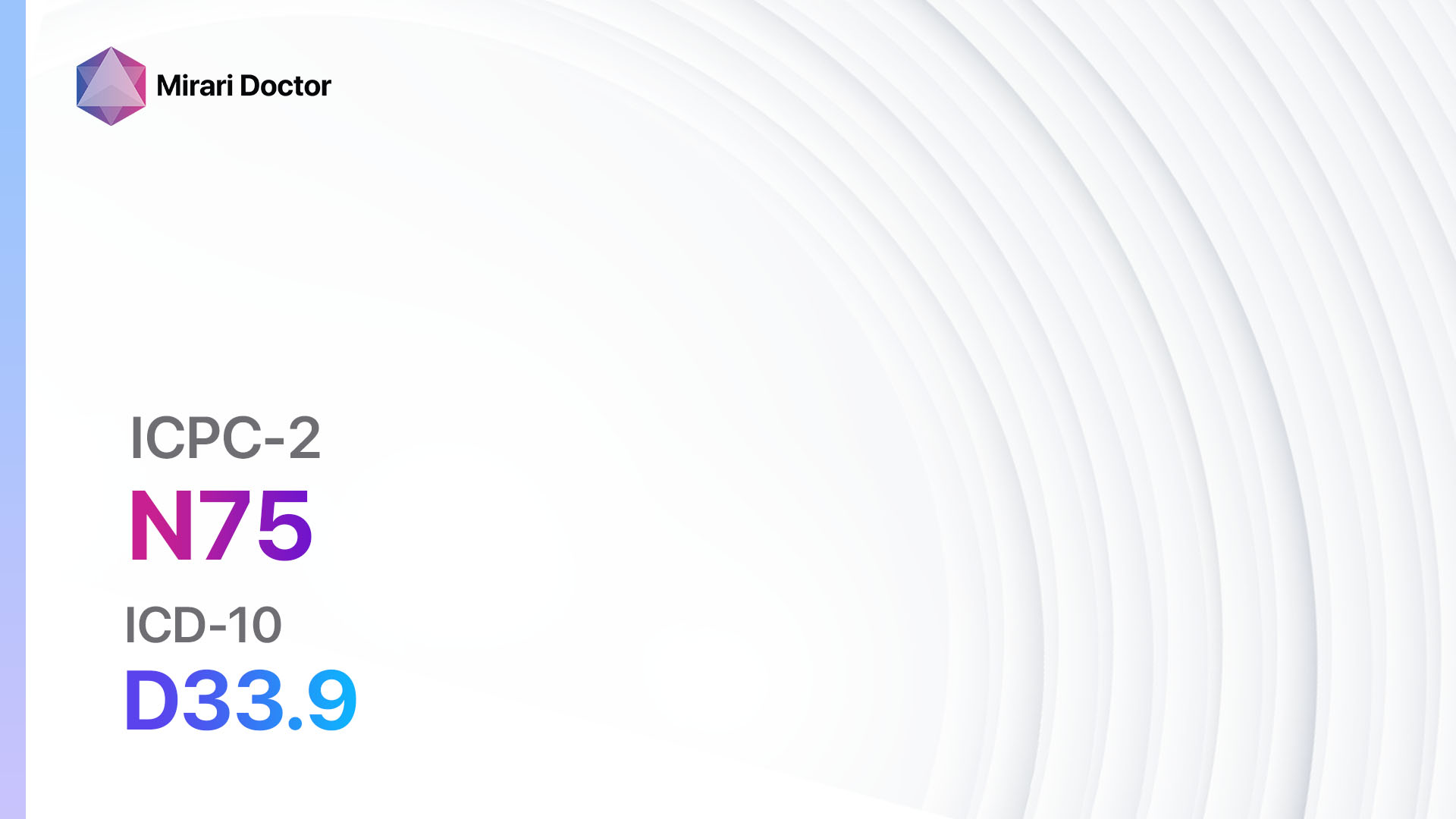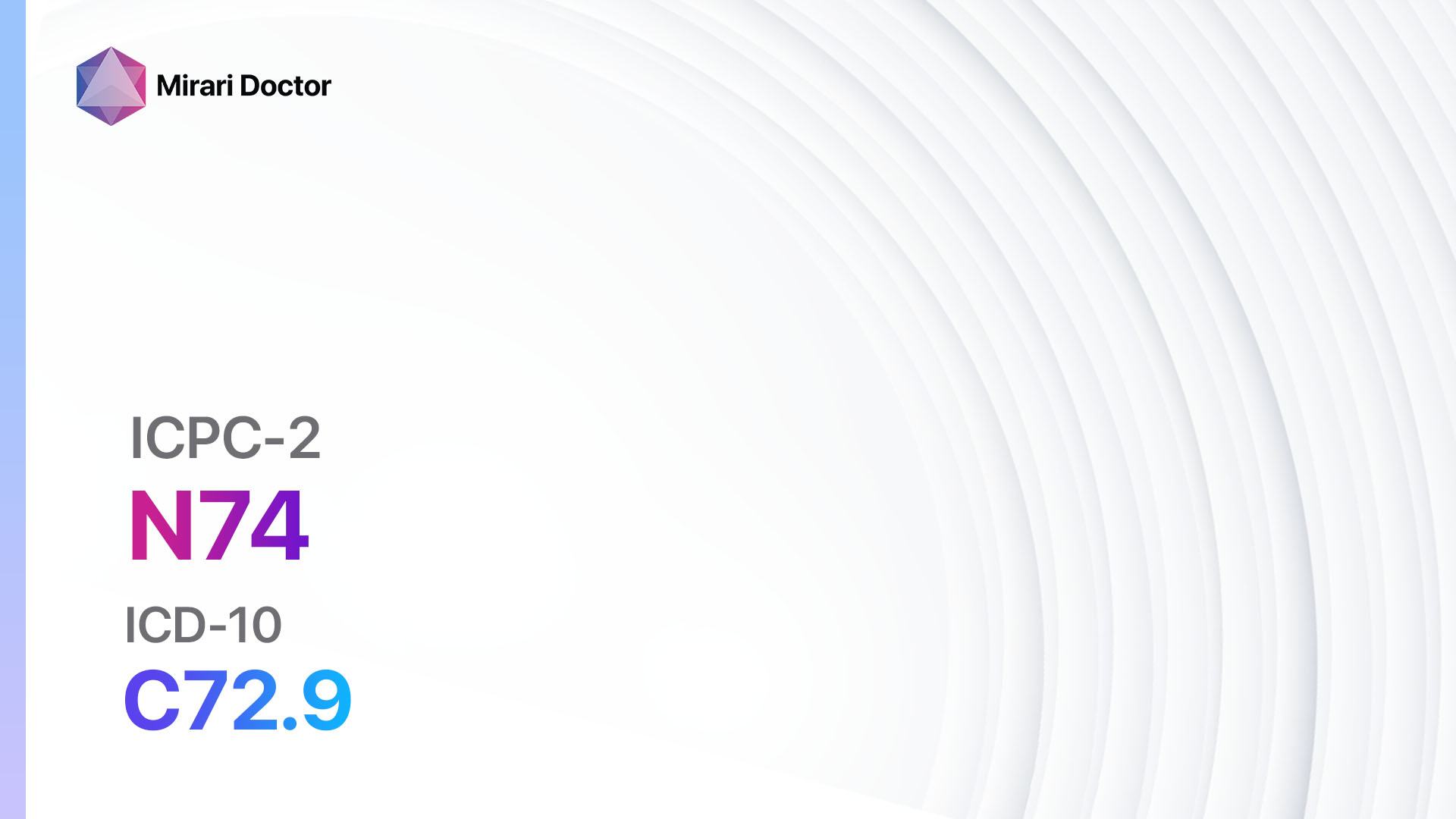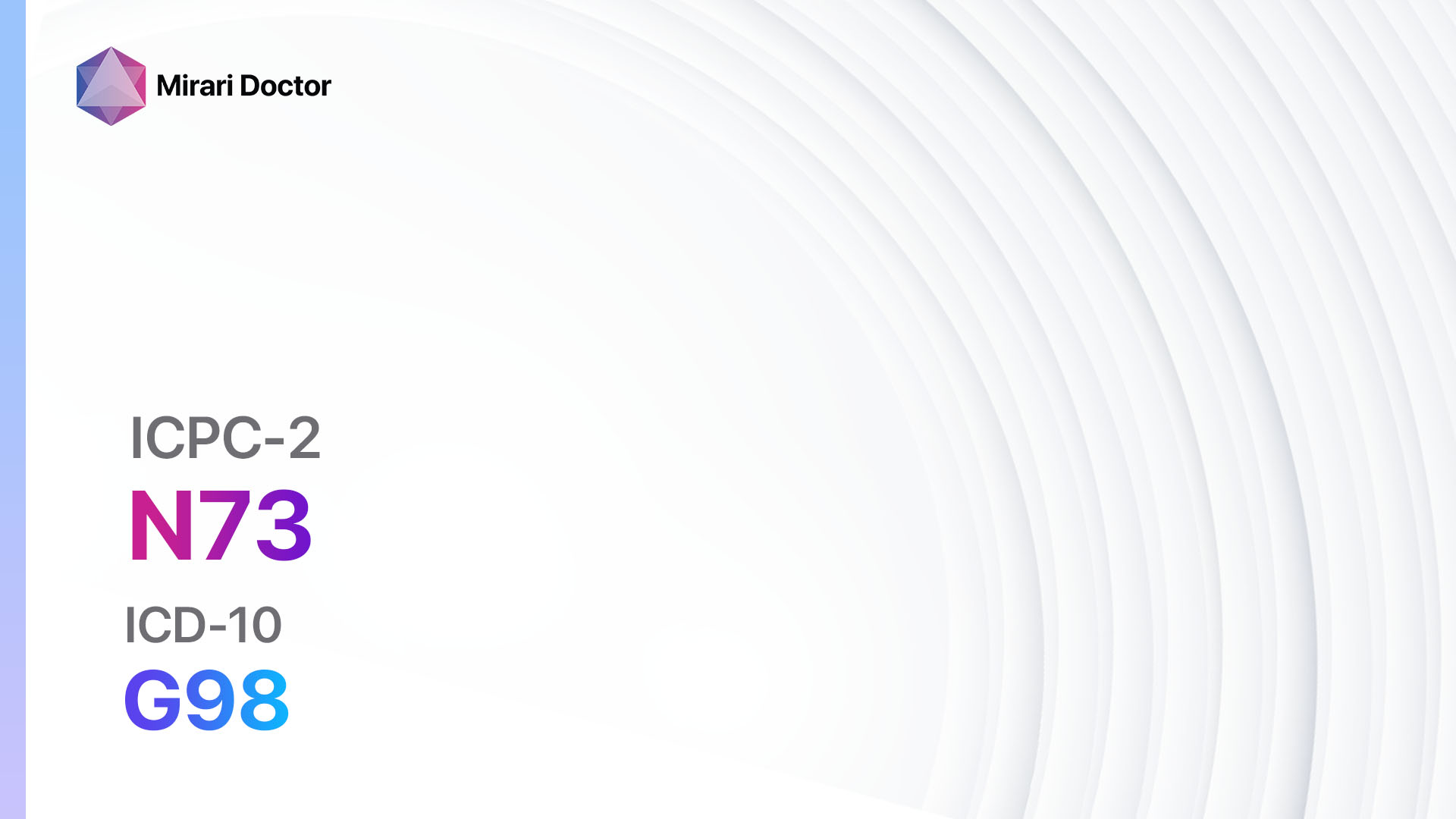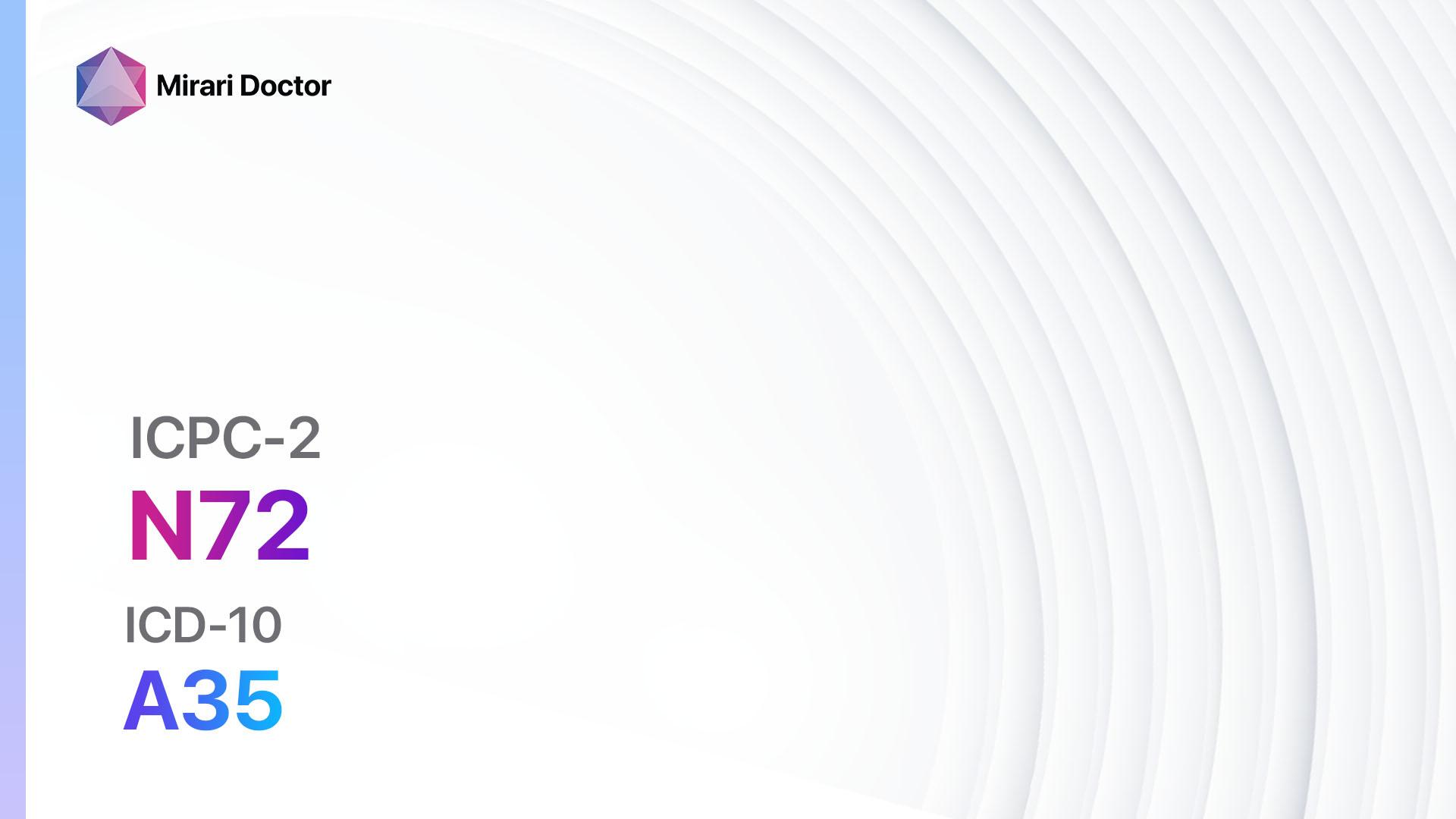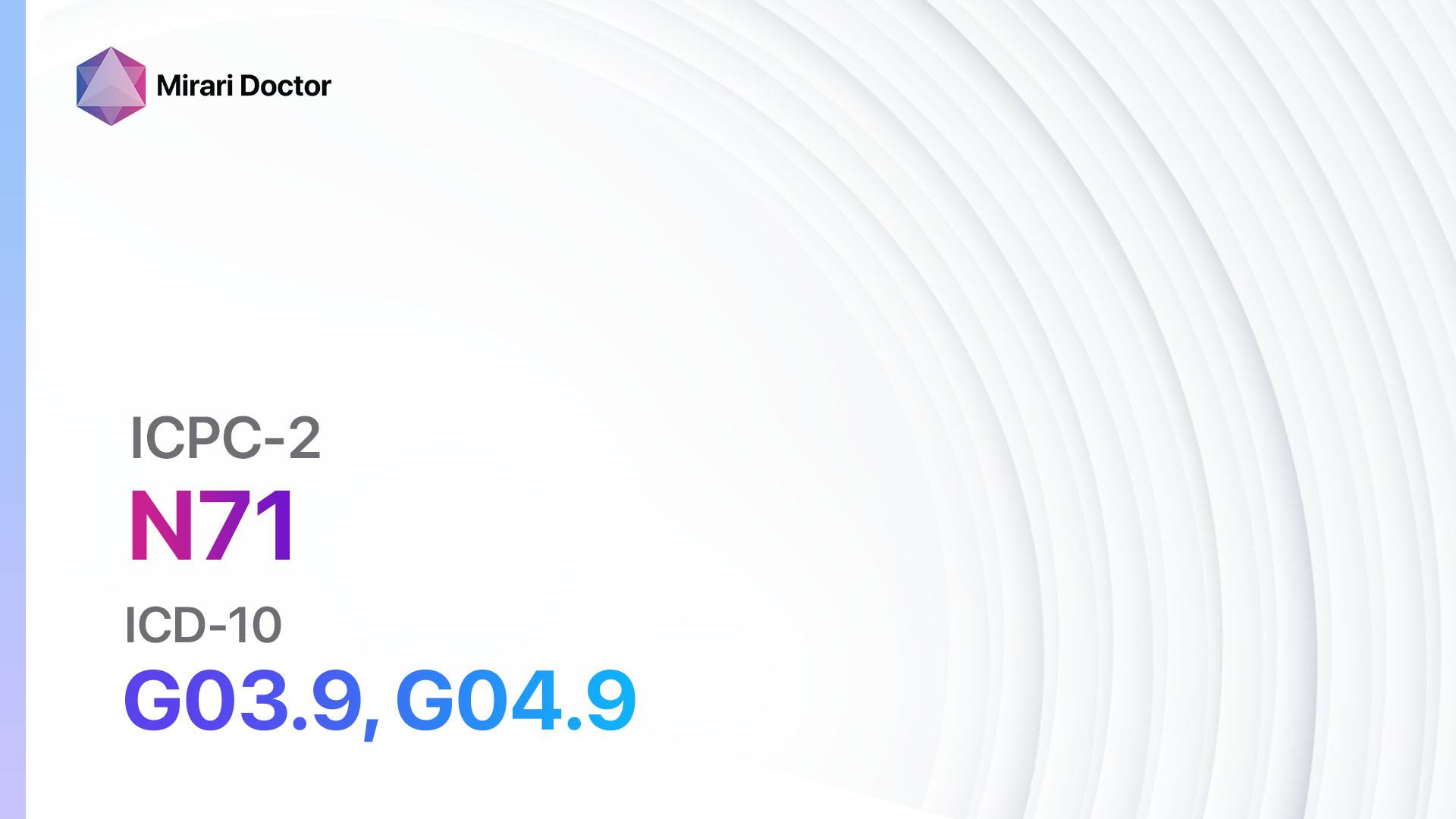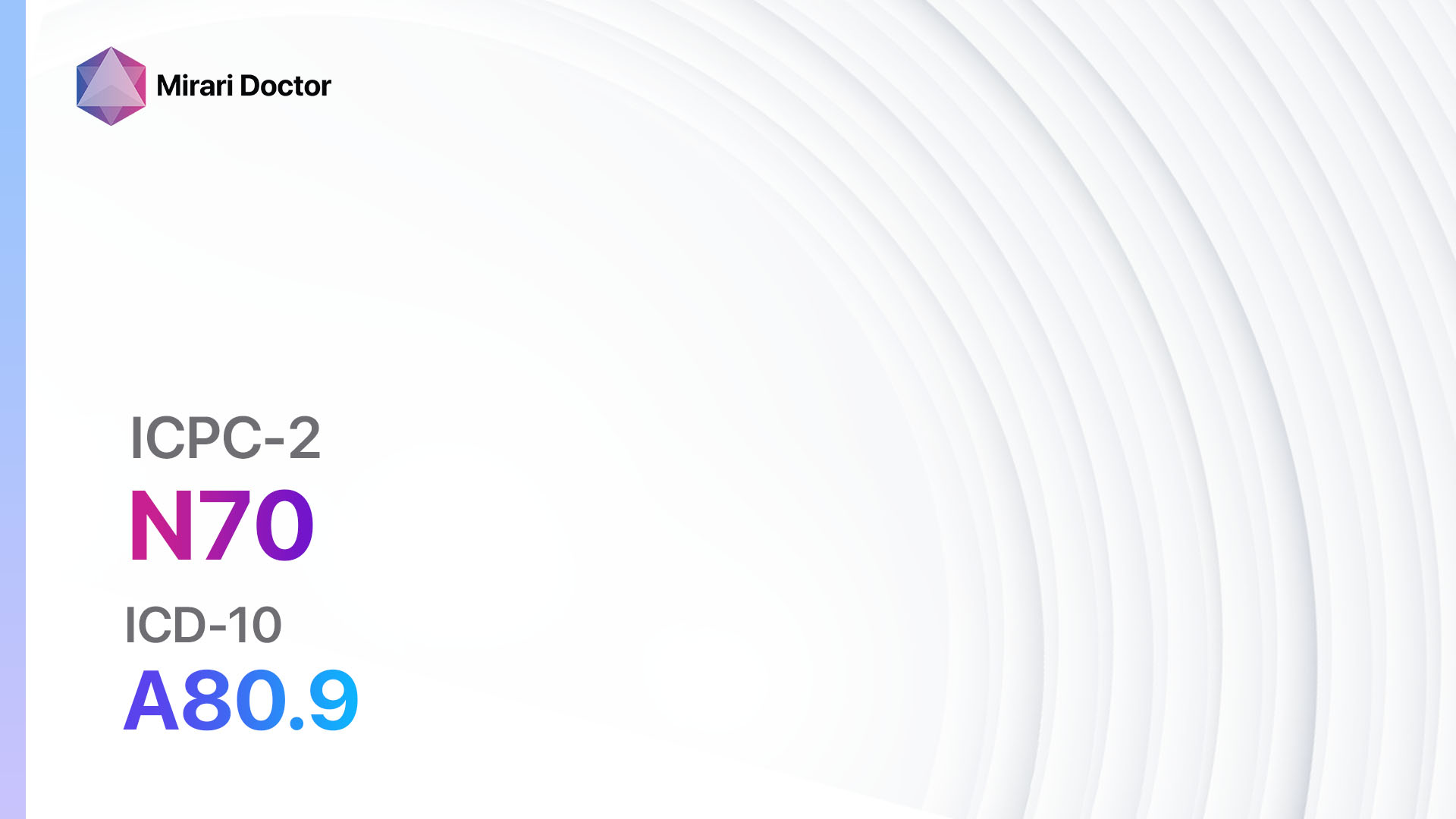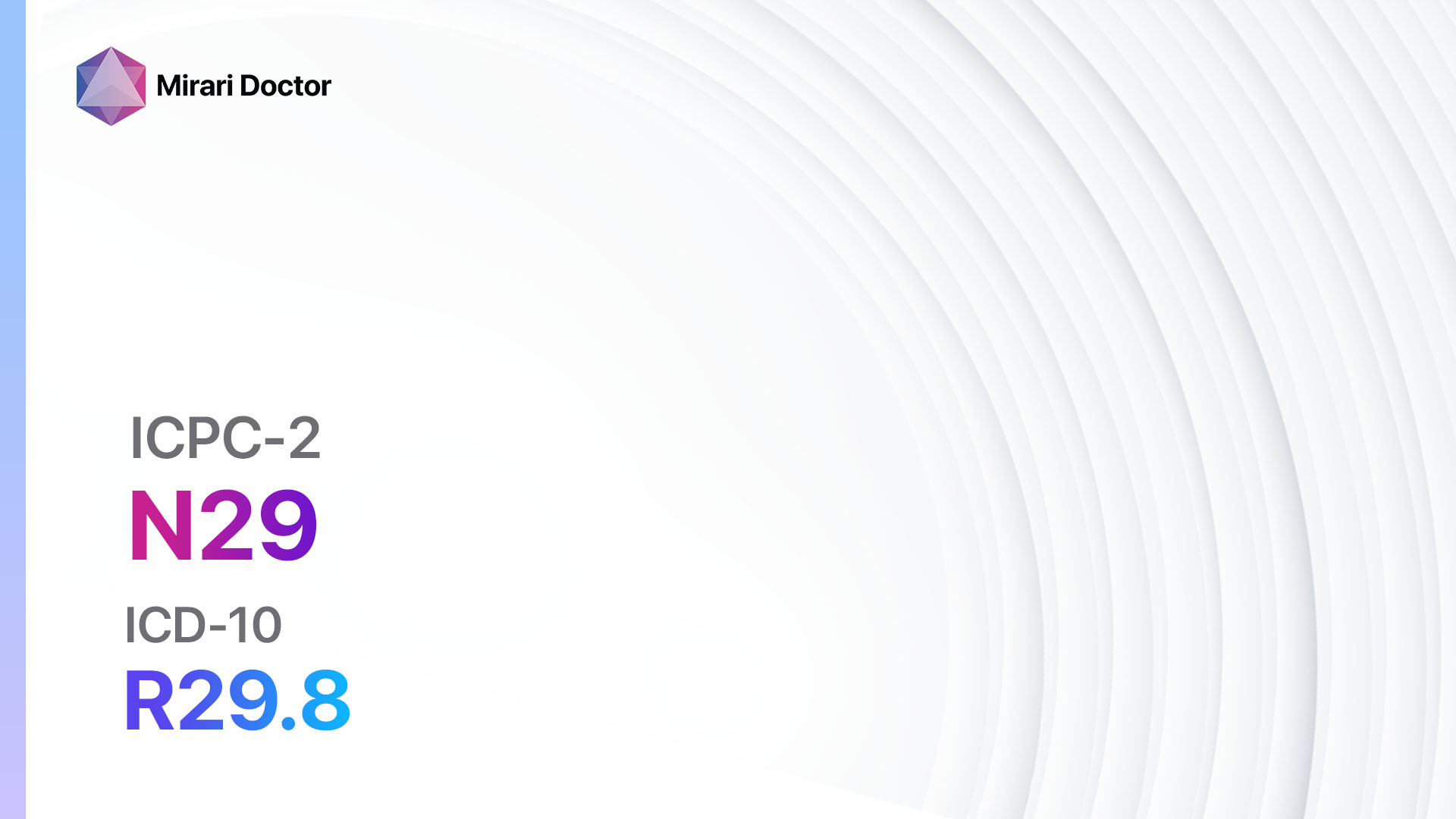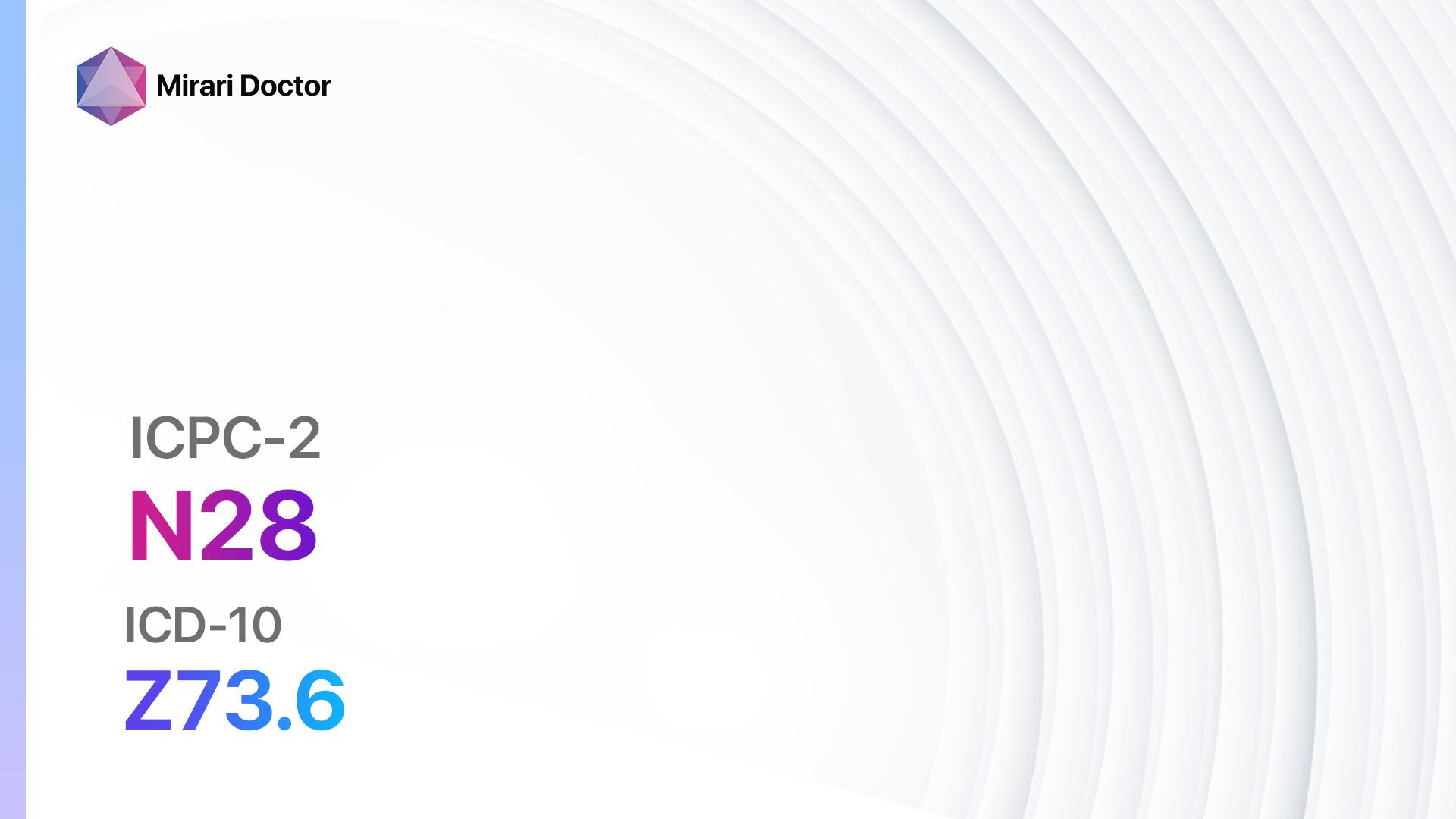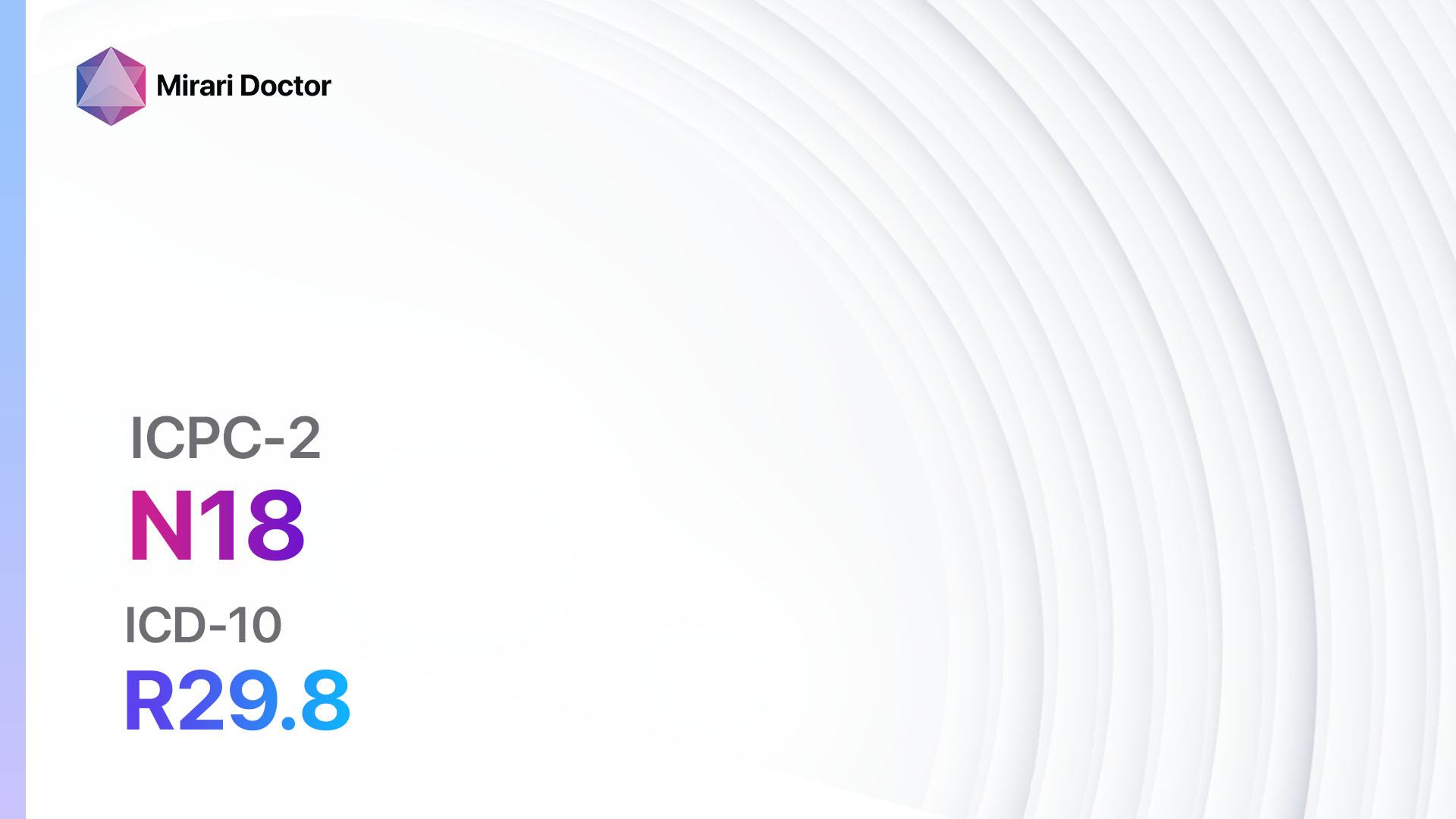
Introduction
Paralysis or weakness refers to the loss of muscle function or strength in one or more parts of the body. It can be caused by various factors, including nerve damage, muscle disorders, or underlying medical conditions. This guide aims to provide an overview of the symptoms, causes, diagnostic steps, possible interventions, and lifestyle interventions for paralysis/weakness.
Codes
- ICPC-2 Code: N18 Paralysis/weakness[1]
- ICD-10 Code: R29.8 Other and unspecified symptoms and signs involving the nervous and musculoskeletal systems[2]
Symptoms
- Muscle weakness: Difficulty in moving or lifting objects, or performing daily activities[3]
- Loss of coordination: Difficulty in maintaining balance or performing precise movements
- Numbness or tingling: Sensations of pins and needles or loss of sensation in affected areas
- Muscle cramps or spasms: Involuntary muscle contractions or twitches
- Fatigue: Feeling tired or lacking energy
- Difficulty speaking or swallowing: Impaired speech or difficulty in swallowing[4]
Causes
- Nerve damage: Damage to the nerves that control muscle movement, such as peripheral neuropathy or spinal cord injury.
- Muscle disorders: Conditions that affect the muscles, such as muscular dystrophy or myasthenia gravis.
- Stroke: Interruption of blood flow to the brain, leading to muscle weakness or paralysis.
- Spinal cord injury: Damage to the spinal cord, resulting in loss of muscle function below the level of injury.
- Autoimmune disorders: Conditions where the immune system mistakenly attacks healthy tissues, such as multiple sclerosis or Guillain-Barré syndrome[5]
Diagnostic Steps
Medical History
- Gather information about the patient’s symptoms, including the onset, duration, and progression.
- Identify any risk factors, such as family history of muscle disorders or previous injuries.
- Assess the patient’s medical history, including any underlying conditions or medications that may contribute to muscle weakness[6]
Physical Examination
- Perform a thorough physical examination, including a neurological assessment to evaluate muscle strength, reflexes, and coordination.
- Look for specific signs or findings indicative of the underlying cause, such as muscle wasting or abnormal muscle tone.
- Assess the patient’s gait, posture, and ability to perform specific movements[7]
Laboratory Tests
- Complete blood count (CBC): To check for signs of infection or anemia.
- Electrolyte levels: To assess for imbalances that may contribute to muscle weakness.
- Creatine kinase (CK) levels: Elevated levels may indicate muscle damage or inflammation.
- Thyroid function tests: To evaluate thyroid hormone levels, as thyroid disorders can cause muscle weakness.
- Autoimmune markers: To identify any autoimmune disorders that may be causing muscle weakness[8]
Diagnostic Imaging
- X-rays: To assess for fractures, dislocations, or other bony abnormalities.
- Ultrasound: To evaluate soft tissues, such as muscles, tendons, or nerves.
- CT scans or MRIs: To visualize the brain, spinal cord, or other structures for signs of injury or abnormalities[9]
Other Tests
- Electromyography (EMG): Measures the electrical activity of muscles and nerves to assess for muscle or nerve damage.
- Nerve conduction studies: Measures the speed and strength of electrical signals in the nerves to evaluate nerve function.
- Muscle biopsy: Removal of a small sample of muscle tissue for examination under a microscope to identify muscle disorders or inflammation[10]
Follow-up and Patient Education
- Schedule follow-up appointments to monitor the progression of symptoms and assess the effectiveness of interventions.
- Provide education on managing symptoms, including exercises, assistive devices, and lifestyle modifications.
- Offer resources and support for coping with the emotional and physical challenges of living with paralysis/weakness.
Possible Interventions
Traditional Interventions
Medications:
Top 5 drugs for Paralysis/weakness:
- Corticosteroids (e.g., Prednisone):
- Cost: Generic versions can be $3-$50/month.
- Contraindications: Active infections, systemic fungal infections.
- Side effects: Increased appetite, weight gain, mood changes.
- Severe side effects: Osteoporosis, adrenal suppression.
- Drug interactions: Nonsteroidal anti-inflammatory drugs (NSAIDs), anticoagulants.
- Warning: Long-term use may require gradual tapering to avoid withdrawal symptoms.
- Anticholinesterase inhibitors (e.g., Pyridostigmine):
- Cost: Generic versions can be $10-$50/month.
- Contraindications: Mechanical intestinal or urinary obstruction.
- Side effects: Nausea, vomiting, diarrhea.
- Severe side effects: Bradycardia, bronchospasm.
- Drug interactions: Beta-blockers, calcium channel blockers.
- Warning: Dosing may need adjustment in patients with renal or hepatic impairment.
- Muscle relaxants (e.g., Baclofen, Tizanidine):
- Cost: Generic versions can be $10-$50/month.
- Contraindications: Hypersensitivity to the drug, history of seizures.
- Side effects: Drowsiness, dizziness, dry mouth.
- Severe side effects: Hallucinations, liver toxicity.
- Drug interactions: Sedatives, opioids.
- Warning: Abrupt discontinuation may lead to withdrawal symptoms.
- Pain medications (e.g., Acetaminophen, Nonsteroidal anti-inflammatory drugs):
- Cost: Generic versions can be $3-$20/month.
- Contraindications: Allergy to the drug, active peptic ulcer disease.
- Side effects: Upset stomach, liver toxicity (with prolonged use).
- Severe side effects: Gastrointestinal bleeding, kidney damage.
- Drug interactions: Anticoagulants, selective serotonin reuptake inhibitors (SSRIs).
- Warning: Avoid exceeding recommended doses to prevent liver toxicity.
- Antidepressants (e.g., Amitriptyline, Duloxetine):
- Cost: Generic versions can be $10-$50/month.
- Contraindications: Recent myocardial infarction, use of monoamine oxidase inhibitors (MAOIs).
- Side effects: Sedation, dry mouth, constipation.
- Severe side effects: Serotonin syndrome, cardiac arrhythmias.
- Drug interactions: MAOIs, other serotonergic drugs.
- Warning: May take several weeks to achieve therapeutic effects.
Alternative Drugs:
- Botulinum toxin injections: Used to temporarily weaken or paralyze specific muscles to improve muscle function. Cost: $500-$1500 per treatment session.
- Immunosuppressants: Used in autoimmune disorders to suppress the immune system and reduce inflammation. Cost: Varies depending on the specific medication.
- Nerve growth factors: Experimental treatments aimed at promoting nerve regeneration and improving muscle function. Cost: Not yet available for clinical use.
Surgical Procedures:
- Nerve decompression surgery: Relieves pressure on compressed nerves to improve muscle function. Cost: $5,000 to $20,000.
- Tendon transfer surgery: Transfers healthy tendons to replace damaged or weakened tendons, improving muscle function. Cost: $10,000 to $30,000.
Alternative Interventions
- Physical therapy: Helps improve muscle strength, coordination, and mobility through targeted exercises. Cost: $50-$150 per session.
- Occupational therapy: Focuses on improving daily activities and functional independence. Cost: $50-$150 per session.
- Acupuncture: May help improve muscle function and reduce pain. Cost: $60-$120 per session.
- Chiropractic care: Manipulation of the spine and joints to improve nerve function and muscle strength. Cost: $50-$200 per session.
- Assistive devices: Can include braces, splints, or mobility aids to support muscle function and improve mobility. Cost: Varies depending on the specific device.
Lifestyle Interventions
- Regular exercise: Engaging in regular physical activity, such as strength training and aerobic exercises, can help improve muscle strength and function. Cost: Varies depending on the chosen exercise program or gym membership.
- Healthy diet: Consuming a balanced diet rich in nutrients, including protein, vitamins, and minerals, can support muscle health and function. Cost: Varies depending on individual dietary choices.
- Stress management: Practicing stress-reducing techniques, such as meditation or relaxation exercises, can help improve overall well-being and reduce muscle tension. Cost: Varies depending on the chosen stress management method.
- Sleep hygiene: Ensuring adequate sleep duration and quality can support muscle recovery and overall health. Cost: Varies depending on individual sleep habits and any necessary interventions for sleep disorders.
- Avoiding triggers: Identifying and avoiding triggers that worsen muscle weakness, such as certain medications or activities, can help manage symptoms. Cost: Varies depending on individual circumstances.
It is important to note that the cost ranges provided are approximate and may vary depending on the location and availability of the interventions.
Mirari Cold Plasma Alternative Intervention
Understanding Mirari Cold Plasma
- Safe and Non-Invasive Treatment: Mirari Cold Plasma is a safe and non-invasive treatment option for various skin conditions. It does not require incisions, minimizing the risk of scarring, bleeding, or tissue damage.
- Efficient Extraction of Foreign Bodies: Mirari Cold Plasma facilitates the removal of foreign bodies from the skin by degrading and dissociating organic matter, allowing easier access and extraction.
- Pain Reduction and Comfort: Mirari Cold Plasma has a local analgesic effect, providing pain relief during the treatment, making it more comfortable for the patient.
- Reduced Risk of Infection: Mirari Cold Plasma has antimicrobial properties, effectively killing bacteria and reducing the risk of infection.
- Accelerated Healing and Minimal Scarring: Mirari Cold Plasma stimulates wound healing and tissue regeneration, reducing healing time and minimizing the formation of scars.
Mirari Cold Plasma Prescription
Video instructions for using Mirari Cold Plasma Device – N18 Paralysis/weakness (ICD-10:R29.8)
| Mild | Moderate | Severe |
| Mode setting: 7 (Immunotherapy) Location: 1 (Sacrum) Morning: 15 minutes, Evening: 15 minutes |
Mode setting: 7 (Immunotherapy) Location: 1 (Sacrum) Morning: 30 minutes, Lunch: 30 minutes, Evening: 30 minutes |
Mode setting: 7 (Immunotherapy) Location: 1 (Sacrum) Morning: 30 minutes, Lunch: 30 minutes, Evening: 30 minutes |
| Mode setting: 7 (Immunotherapy) Location: 4 (Heart, Bile & Pancreas) Morning: 15 minutes, Evening: 15 minutes |
Mode setting: 7 (Immunotherapy) Location: 4 (Heart, Bile & Pancreas) Morning: 30 minutes, Lunch: 30 minutes, Evening: 30 minutes |
Mode setting: 7 (Immunotherapy) Location: 4 (Heart, Bile & Pancreas) Morning: 30 minutes, Lunch: 30 minutes, Evening: 30 minutes |
| Mode setting: 7 (Immunotherapy) Location: 4 (Heart, Bile & Pancreas) Morning: 15 minutes, Evening: 15 minutes |
Mode setting: 7 (Immunotherapy) Location: 4 (Heart, Bile & Pancreas) Morning: 30 minutes, Lunch: 30 minutes, Evening: 30 minutes |
Mode setting: 7 (Immunotherapy) Location: 4 (Heart, Bile & Pancreas) Morning: 30 minutes, Lunch: 30 minutes, Evening: 30 minutes |
| Mode setting: 7 (Immunotherapy) Location: 7 (Neuro system & ENT) Morning: 15 minutes, Evening: 15 minutes |
Mode setting: 7 (Immunotherapy) Location: 7 (Neuro system & ENT) Morning: 30 minutes, Lunch: 30 minutes, Evening: 30 minutes |
Mode setting: 7 (Immunotherapy) Location: 7 (Neuro system & ENT) Morning: 30 minutes, Lunch: 30 minutes, Evening: 30 minutes |
| Total Morning: 60 minutes approx. $10 USD, Evening: 60 minutes approx. $10 USD |
Total Morning: 120 minutes approx. $20 USD, Lunch: 120 minutes approx. $20 USD, Evening: 120 minutes approx. $20 USD, |
Total Morning: 120 minutes approx. $20 USD, Lunch: 120 minutes approx. $20 USD, Evening: 120 minutes approx. $20 USD, |
| Usual treatment for 7-60 days approx. $140 USD – $1200 USD | Usual treatment for 6-8 weeks approx. $2,520 USD – $3,360 USD |
Usual treatment for 3-6 months approx. $5,400 USD – $10,800 USD
|
 |
|
Use the Mirari Cold Plasma device to treat Paralysis/weakness effectively.
WARNING: MIRARI COLD PLASMA IS DESIGNED FOR THE HUMAN BODY WITHOUT ANY ARTIFICIAL OR THIRD PARTY PRODUCTS. USE OF OTHER PRODUCTS IN COMBINATION WITH MIRARI COLD PLASMA MAY CAUSE UNPREDICTABLE EFFECTS, HARM OR INJURY. PLEASE CONSULT A MEDICAL PROFESSIONAL BEFORE COMBINING ANY OTHER PRODUCTS WITH USE OF MIRARI.
Step 1: Cleanse the Skin
- Start by cleaning the affected area of the skin with a gentle cleanser or mild soap and water. Gently pat the area dry with a clean towel.
Step 2: Prepare the Mirari Cold Plasma device
- Ensure that the Mirari Cold Plasma device is fully charged or has fresh batteries as per the manufacturer’s instructions. Make sure the device is clean and in good working condition.
- Switch on the Mirari device using the power button or by following the specific instructions provided with the device.
- Some Mirari devices may have adjustable settings for intensity or treatment duration. Follow the manufacturer’s instructions to select the appropriate settings based on your needs and the recommended guidelines.
Step 3: Apply the Device
- Place the Mirari device in direct contact with the affected area of the skin. Gently glide or hold the device over the skin surface, ensuring even coverage of the area experiencing.
- Slowly move the Mirari device in a circular motion or follow a specific pattern as indicated in the user manual. This helps ensure thorough treatment coverage.
Step 4: Monitor and Assess:
- Keep track of your progress and evaluate the effectiveness of the Mirari device in managing your Paralysis/weakness. If you have any concerns or notice any adverse reactions, consult with your health care professional.
Note
This guide is for informational purposes only and should not replace the advice of a medical professional. Always consult with your healthcare provider or a qualified medical professional for personal advice, diagnosis, or treatment. Do not solely rely on the information presented here for decisions about your health. Use of this information is at your own risk. The authors of this guide, nor any associated entities or platforms, are not responsible for any potential adverse effects or outcomes based on the content.
Mirari Cold Plasma System Disclaimer
- Purpose: The Mirari Cold Plasma System is a Class 2 medical device designed for use by trained healthcare professionals. It is registered for use in Thailand and Vietnam. It is not intended for use outside of these locations.
- Informational Use: The content and information provided with the device are for educational and informational purposes only. They are not a substitute for professional medical advice or care.
- Variable Outcomes: While the device is approved for specific uses, individual outcomes can differ. We do not assert or guarantee specific medical outcomes.
- Consultation: Prior to utilizing the device or making decisions based on its content, it is essential to consult with a Certified Mirari Tele-Therapist and your medical healthcare provider regarding specific protocols.
- Liability: By using this device, users are acknowledging and accepting all potential risks. Neither the manufacturer nor the distributor will be held accountable for any adverse reactions, injuries, or damages stemming from its use.
- Geographical Availability: This device has received approval for designated purposes by the Thai and Vietnam FDA. As of now, outside of Thailand and Vietnam, the Mirari Cold Plasma System is not available for purchase or use.
References
-
- ICPC-2 – English. (n.d.). Retrieved from https://www.gesy.org.cy/el-gr/annualreport/icpc-2-english1-10.pdf
- 2024 ICD-10-CM Diagnosis Code R29.8. (n.d.). Retrieved from https://www.icd10data.com/ICD10CM/Codes/R00-R99/R25-R29/R29-/R29.8
- Paralysis: Symptoms, Causes, and Treatment – Verywell Health. (n.d.). Retrieved from https://www.verywellhealth.com/paralysis-5224673
- Paralysis: What Is It, Diagnosis, Management & Prevention. (n.d.). Retrieved from https://my.clevelandclinic.org/health/diseases/15345-paralysis
- Paralysis: Types, symptoms, and treatment – MedicalNewsToday. (n.d.). Retrieved from https://www.medicalnewstoday.com/articles/paralysis
- Paralysis: Symptoms, Causes, Risk Factors, Diagnosis, and Treatment. (n.d.). Retrieved from https://www.narayanahealth.org/blog/paralysis-symptoms-causes-risk-factors-diagnosis-and-treatment
- Paralysis: Symptoms, Risk Factors, Diagnosis and Treatment. (n.d.). Retrieved from https://www.narayanahealth.org/diseases/paralysis
- ICPC-2 Code: N18 Paralysis/weakness – RxReasoner. (n.d.). Retrieved from https://www.rxreasoner.com/icpc2codes/N18
- Other symptoms and signs involving the nervous … – ICD-10 Data. (n.d.). Retrieved from https://www.icd10data.com/ICD10CM/Codes/R00-R99/R25-R29/R29-
- ICD-10 code: R29.8 Other and unspecified symptoms and signs … (n.d.). Retrieved from https://gesund.bund.de/en/icd-code-search/r29-8
Related articles
Made in USA


